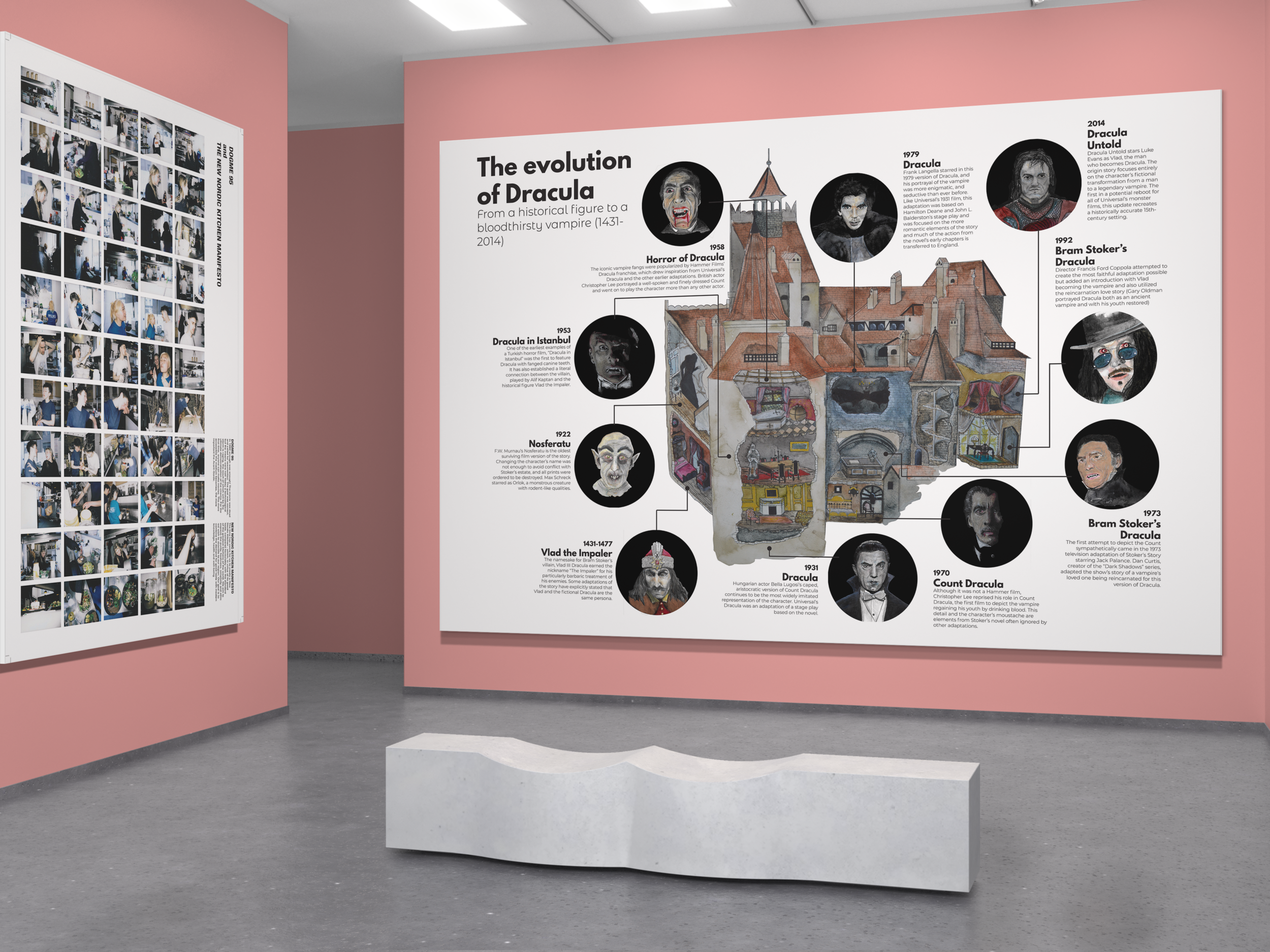
Infographics.
The evolution of Dracula
I have researched the metanarrative of Dracula from the historical origins of the character to the miscellaneous film adaptations.
Therefore, I took into consideration the representations of the character in subject areas such as History, Literature and Cinematography.
Consequently, I built a timeline on the evolution of this hyperreal, fictional persona from its earliest sources (Vlad the Impaler, 1436) and Bram Stoker’s “Dracula” (1897) to the moment it won the attention of Hollywood.
In order to analyze the major differences between Dracula’s depictions, I focused on various topics of research, such as Mythology, folklore, symbolism, and Semiotics while presenting the narratives and metanarratives related to this complex character.
I studied the concepts and ideas critics have highlighted about Bram Stoker’s “Dracula” such as the comparison with the Freudian id, the correlations with capitalism, colonialism and racial mixing and, nevertheless, the personality traits of the character together with its controversial sexuality.
Dogme 95 and The New Nordic Kitchen Manifesto
This poster consists of a series of narrative Polaroid photographs, which build a film sequence inspired by the “Dogme 95 manifesto” limitations. The main theme of the narrative is the “New Nordic Kitchen Manifesto”, which is one of the consequences of the Dogme 95 because it advocates for purity and freshness, similar to what Thomas Vinterberg and Lars von Trier wanted to inflict.

